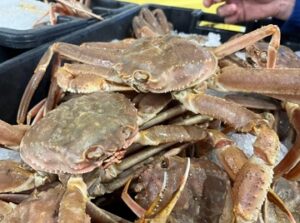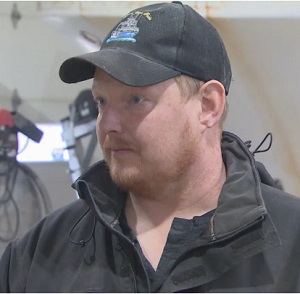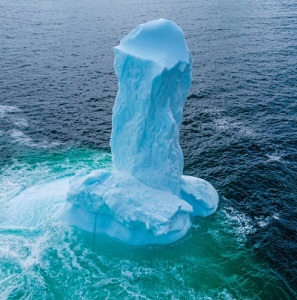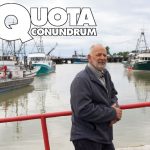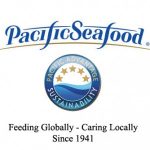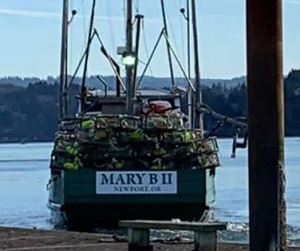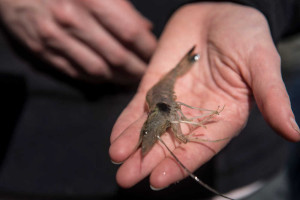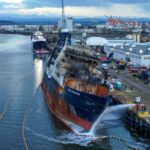Tag Archives: Newfoundland
FFAW Calls for Drastic Changes to Provincial Processing Licensing Amid Harvester Protests in St. John’s
 ST. JOHN’S, NL – FFAW-Unifor is calling on the provincial government to listen to protesting fish harvesters by lifting all processing caps in the province, grant new processing licenses, and remove restrictions on outside buyers. “Fish harvesters in our province have been disadvantaged long enough. The situation has gotten so severe in recent years that a very large number are now facing imminent bankruptcy due to the cartel-like environment processing companies enjoy here in Newfoundland and Labrador,” explains Greg Pretty, FFAW-Unifor. “When fish harvesters cannot find a buyer for their catch – we have a serious problem. This province cannot have a thriving fishery if fish harvesters are not succeeding, and the current wall of opposition they face makes success unattainable,” Pretty says. more, >>click to read<< 15:01
ST. JOHN’S, NL – FFAW-Unifor is calling on the provincial government to listen to protesting fish harvesters by lifting all processing caps in the province, grant new processing licenses, and remove restrictions on outside buyers. “Fish harvesters in our province have been disadvantaged long enough. The situation has gotten so severe in recent years that a very large number are now facing imminent bankruptcy due to the cartel-like environment processing companies enjoy here in Newfoundland and Labrador,” explains Greg Pretty, FFAW-Unifor. “When fish harvesters cannot find a buyer for their catch – we have a serious problem. This province cannot have a thriving fishery if fish harvesters are not succeeding, and the current wall of opposition they face makes success unattainable,” Pretty says. more, >>click to read<< 15:01
Newfoundland capelin out of ‘critical zone,’ but not because there are more fish
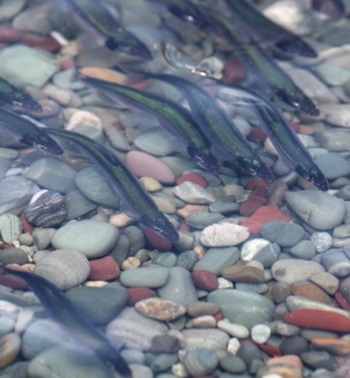 Scientists say they no longer consider the capelin off Newfoundland’s east coast to be in the critical zone, but it’s not because there are more fish. Federal Fisheries Department scientists say they’ve adjusted the benchmark for the critical zone designation, which is used for fish stocks struggling to recover. The adjustment follows a similar decision last year to adjust the critical zone benchmark for the region’s cod stocks. The shimmery sardine-sized pelagic fish are an important food source for cod, and scientists say the coinciding adjustments reflect cod’s dependence on capelin. more, >>click ti read<< 18:55
Scientists say they no longer consider the capelin off Newfoundland’s east coast to be in the critical zone, but it’s not because there are more fish. Federal Fisheries Department scientists say they’ve adjusted the benchmark for the critical zone designation, which is used for fish stocks struggling to recover. The adjustment follows a similar decision last year to adjust the critical zone benchmark for the region’s cod stocks. The shimmery sardine-sized pelagic fish are an important food source for cod, and scientists say the coinciding adjustments reflect cod’s dependence on capelin. more, >>click ti read<< 18:55
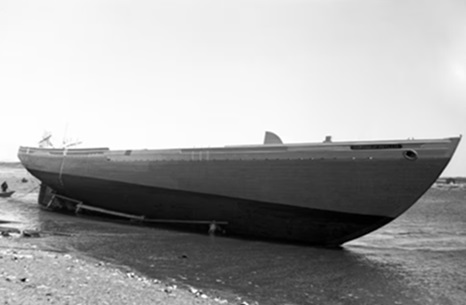
The Grandys of Garnish: A history of shipbuilding and lobster fishing in a tiny N.L. town
During the heyday of the schooner bank fishery, from the late 1800s up to the 1940s, shipbuilding was the major employer in Garnish. Dozens of carpenters and labourers were involved, from cutting the timbers up around the headwaters of the Garnish and Black rivers to operating sawmills downstream and then the actual building of the vessels. The industry reached its peak in the mid 1930s, when in one year, according to 97-year-old Melvin Grandy, five boats were being built at the same time. The five vessels were different size banking schooners, capable of carrying anywhere from four dories up to 12 dories each. Without a doubt the master boat builder in the Garnish of the 1930s and ’40s was Cephas Grandy. His reputation as a craftsman spread not only all around Newfoundland but also on the Canadian mainland. photos, >>click to read<< 07:04
Commercial Fisherman Scott Dicks of Grand Bank has passed away
 It is with broken hearts that the family of the late Scott Dicks of Grand Bank announces his passing. Scott passed away on the FV Anne Risley in Mulgrave, NS on February 22, 2024 at the age of 36. Leaving to mourn with a lifetime of wonderful memories are the love of his life for 14 years; Nicole; his son, Anthony of Grand Bank; his daughter, Olivia of NB; their daughter, Naomi of Grand Bank; mother, Ellie Keeping; father, Hughie Dicks (Petchie); sister, Tricia (Adam – brother in-law & Best Friend); sister in-law, Nickita Hillier (Jamie); nephews, Addison & Jaxxon; parents in-law, Nick & Sandra House; Best Buddy, Frank; shipmates & work family, crew of the FV Anne Risley; plus a large circle of aunts, uncles, many, many cousins, whom he loved dearly, extended family and friends. more, >>click to read<< 08:55
It is with broken hearts that the family of the late Scott Dicks of Grand Bank announces his passing. Scott passed away on the FV Anne Risley in Mulgrave, NS on February 22, 2024 at the age of 36. Leaving to mourn with a lifetime of wonderful memories are the love of his life for 14 years; Nicole; his son, Anthony of Grand Bank; his daughter, Olivia of NB; their daughter, Naomi of Grand Bank; mother, Ellie Keeping; father, Hughie Dicks (Petchie); sister, Tricia (Adam – brother in-law & Best Friend); sister in-law, Nickita Hillier (Jamie); nephews, Addison & Jaxxon; parents in-law, Nick & Sandra House; Best Buddy, Frank; shipmates & work family, crew of the FV Anne Risley; plus a large circle of aunts, uncles, many, many cousins, whom he loved dearly, extended family and friends. more, >>click to read<< 08:55
Commercial redfish fishery to reopen, but pending quota threatens to push some fishers out
 “It hurts me to talk about it,” says Brad Genge, a 51-year-old inshore fisherman from Anchor Point, on the west coast of Newfoundland’s northern peninsula. Genge says what should have been a good news story – the Government of Canada’s historic reopening of the east coast commercial redfish fishery – is hitting fishermen in this province hard. “Worst news we could have gotten,” says Genge. “Only thing that could have hurt more is if they came down and hit us in the face with a piece of lumber.” “We are done, we are out of the fishery,” says Genge, who tied up his trawler, the BNB Mariner, in early February. Video, more, >>click to read<< 08:22
“It hurts me to talk about it,” says Brad Genge, a 51-year-old inshore fisherman from Anchor Point, on the west coast of Newfoundland’s northern peninsula. Genge says what should have been a good news story – the Government of Canada’s historic reopening of the east coast commercial redfish fishery – is hitting fishermen in this province hard. “Worst news we could have gotten,” says Genge. “Only thing that could have hurt more is if they came down and hit us in the face with a piece of lumber.” “We are done, we are out of the fishery,” says Genge, who tied up his trawler, the BNB Mariner, in early February. Video, more, >>click to read<< 08:22
Hundreds of jobs, industry stability at stake in pending Atlantic Canada fishery decision
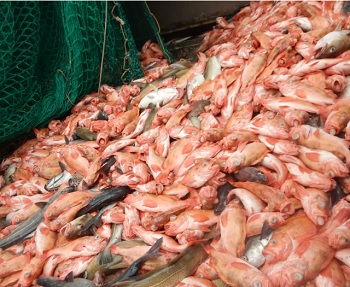 The Trudeau government is poised to allocate fishing access to the massive redfish population in the Gulf of St. Lawrence at the end of the month, a highly anticipated decision generating both dread and hope throughout the industry in Quebec and Atlantic Canada. Nova Scotia, which has the most to lose, is warning Ottawa that “hundreds of jobs” are at stake if it loses its long-standing share of the fishery. Now that the redfish population is estimated to weigh in at a whopping four million metric tonnes, Scotia Harvest and the other Nova Scotia operators are looking nervously at other provinces lobbying for access. Quebec and Newfoundland and Labrador interests, to take one example, are lobbying for a piece of the action to compensate for a drastic reduction in shrimp quota for fleets in their province. more, >>click to read<< 09:06
The Trudeau government is poised to allocate fishing access to the massive redfish population in the Gulf of St. Lawrence at the end of the month, a highly anticipated decision generating both dread and hope throughout the industry in Quebec and Atlantic Canada. Nova Scotia, which has the most to lose, is warning Ottawa that “hundreds of jobs” are at stake if it loses its long-standing share of the fishery. Now that the redfish population is estimated to weigh in at a whopping four million metric tonnes, Scotia Harvest and the other Nova Scotia operators are looking nervously at other provinces lobbying for access. Quebec and Newfoundland and Labrador interests, to take one example, are lobbying for a piece of the action to compensate for a drastic reduction in shrimp quota for fleets in their province. more, >>click to read<< 09:06
In St. John’s 150 years ago, a giant squid had its picture taken. That photo would ignite the world’s imagination
 Before one remarkable moment in downtown St. John’s a century and a half ago, the giant squid lived only in the tall tales of sailors and fishermen. Then, thanks to a single photograph, the massive cephalopod immediately moved from the realm of fantasy to reality. And today “squid spirits” — as enthusiasts consider themselves — continue to marvel at the fact that there’s still so much mystery and awe around the creature 150 years later. “It was seminal. It pushed science’s understanding of giant squid ahead by leaps and bounds, and No. 1: it proved they were real,” says Jenny Higgins, a writer who works with the Maritime History Archive at Memorial University. This story starts in November 1873, when a group of fishermen in Logy Bay out on the water came across something much bigger than herring. Video,Images, photos, more, >>click to read<< 09:48
Before one remarkable moment in downtown St. John’s a century and a half ago, the giant squid lived only in the tall tales of sailors and fishermen. Then, thanks to a single photograph, the massive cephalopod immediately moved from the realm of fantasy to reality. And today “squid spirits” — as enthusiasts consider themselves — continue to marvel at the fact that there’s still so much mystery and awe around the creature 150 years later. “It was seminal. It pushed science’s understanding of giant squid ahead by leaps and bounds, and No. 1: it proved they were real,” says Jenny Higgins, a writer who works with the Maritime History Archive at Memorial University. This story starts in November 1873, when a group of fishermen in Logy Bay out on the water came across something much bigger than herring. Video,Images, photos, more, >>click to read<< 09:48

Northern cod numbers may have moved out of critical zone, says federal scientist
Captain Alex Saunders has more experience fishing northern cod than most fishermen. At 81 years old, the fishing captain has fished for cod off the Labrador coast for six decades. This year, he says, was a banner year for that fishery. “There were no codfish in northern Labrador for about 60 years, but this summer the cod were all along the Labrador coast from Blanc Sablan in the south to north of Nain,” Mr. Saunders says. A good catch rate this season meant Mr. Saunders’s crew hauled in  gillnets every day for weeks, returning to communities such as Pinsent’s Arm, a fishing town of about 50 people along the Labrador coast, to land cod at the wharf. But the season’s quick success also meant its early closing. “On a Friday afternoon they said, ‘Get your gear out of the water Sunday by six o’clock,’” Mr. Saunders says of the Department of Fisheries and Oceans’ (DFO) decision to shut down the fall northern cod stewardship fishery weeks earlier than planned – a measure to ensure fishing did not exceed season limits. Photos, >>click to read<< 08:33
gillnets every day for weeks, returning to communities such as Pinsent’s Arm, a fishing town of about 50 people along the Labrador coast, to land cod at the wharf. But the season’s quick success also meant its early closing. “On a Friday afternoon they said, ‘Get your gear out of the water Sunday by six o’clock,’” Mr. Saunders says of the Department of Fisheries and Oceans’ (DFO) decision to shut down the fall northern cod stewardship fishery weeks earlier than planned – a measure to ensure fishing did not exceed season limits. Photos, >>click to read<< 08:33
Newfoundland fishermen get ‘best news’ on northern cod stocks in a generation
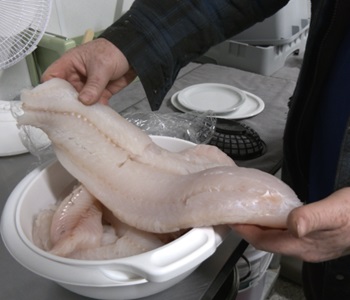 It’s a technical, scientific change: the Limit Reference Point, a key part of the assessment of a fish stock’s health, has been revised. Because of a change in their scientific method, officials at Fisheries and Oceans Canada now believe that Newfoundland’s northern cod stock has moved out of the critical zone for the first time in decades. When then-fisheries minister John Crosbie shut down most of the fishery in 1992, about 30,000 fish harvesters instantly lost their jobs. It was the biggest layoff in Canadian history. Fish harvesters were given $225 a week for 10 weeks to get by. The moratorium was only expected to last two years, but in the decades since, the northern cod stock never left the critical zone — until now. photos, >>click to read<< 07:44
It’s a technical, scientific change: the Limit Reference Point, a key part of the assessment of a fish stock’s health, has been revised. Because of a change in their scientific method, officials at Fisheries and Oceans Canada now believe that Newfoundland’s northern cod stock has moved out of the critical zone for the first time in decades. When then-fisheries minister John Crosbie shut down most of the fishery in 1992, about 30,000 fish harvesters instantly lost their jobs. It was the biggest layoff in Canadian history. Fish harvesters were given $225 a week for 10 weeks to get by. The moratorium was only expected to last two years, but in the decades since, the northern cod stock never left the critical zone — until now. photos, >>click to read<< 07:44
‘It lives’: The story of Gaultois, a rural Newfoundland community in limbo
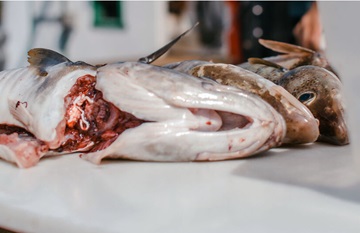 When Atlantic Canada’s cod fishery collapsed, it took a number of small towns with it. Gaultois, an isolated community on Newfoundland’s rugged south coast, hung on for decades after the fish vanished and the town’s fish plant closed in 1990. But with fish no longer to be had, the town’s population plummeted from 600 in the late 1980s to fewer than 100. With numbers that low, residents were faced with the question of whether the town was still viable and in July 2022, opted to hold a resettlement vote. Resettlement votes happen often in Newfoundland and Labrador. Small outport communities vote on whether to stay in their rural homes or if they should move to bigger towns with financial assistance from the provincial government. >>click to read<< 10:35
When Atlantic Canada’s cod fishery collapsed, it took a number of small towns with it. Gaultois, an isolated community on Newfoundland’s rugged south coast, hung on for decades after the fish vanished and the town’s fish plant closed in 1990. But with fish no longer to be had, the town’s population plummeted from 600 in the late 1980s to fewer than 100. With numbers that low, residents were faced with the question of whether the town was still viable and in July 2022, opted to hold a resettlement vote. Resettlement votes happen often in Newfoundland and Labrador. Small outport communities vote on whether to stay in their rural homes or if they should move to bigger towns with financial assistance from the provincial government. >>click to read<< 10:35

Qikiqtaaluk Corp. signs deal to acquire new fishing vessel
Qikiqtaaluk Corp. has reached a deal to purchase a new fishing trawler, to be called Saputi II, from a Spanish firm. “It’s a big project,” Jerry Ward, the company’s director of fisheries, told Nunatsiaq News of the agreement signed Sept. 26 with shipbuilder Freier Shipyard in Vigo, Spain. Ward said it could take about two and a half years to build the ship but the Qikiqtaaluk Corp., the business development arm of the Qikiqtani Inuit Association, hopes it will be ready sooner than that. The Saputi II will be a factory-freezer fishing trawler, able to keep fish frozen after they’ve been caught until the ship returns to its port in Newfoundland. It will measure nearly 80 metres long and 17 metres wide. Designed for multiple species, the vessel will be able harvest shrimp and turbot. >>click to read<< 10:48
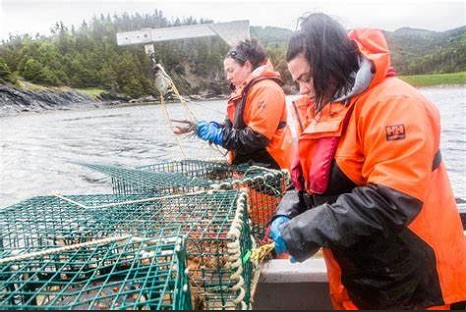
Newfoundland sisters continue family’s lobster legacy
It’s raining heavily and the waves are high near Bonne Bay, but Julia Crocker and Josie Hann are full of smiles as they work. The Newfoundland sisters are lobster fishing outside the tiny village of Curzon, near Woody Point. Ms. Crocker navigates the boat, while Ms. Hann pulls in the traps. Ms. Crocker and Ms. Hann have been fishing since they were teenagers. Their father, Morris Brake, needed crew members for his enterprise and both girls seized the opportunity. For Ms. Crocker, it’s now close to 20 years and for Ms. Hann, it’s nearing six. “We’re the only female lobster crew here in the area,” Ms. Hann proudly says. Photos, >click to read< 16:07

DFO Rolls Over Cod Quota, Fails to Use All Available Data for Assessment
Today, the Department of Fisheries and Oceans (DFO) announced a rollover to the Maximum Allowable Harvest (MAH) for the 2J3KL Northern Cod Stewardship fishery. The rollover comes as a surprise to harvesters, who requested an increase this year in line with the health of the stock and commercial needs for both harvesting and processing. Harvesters consider Northern Cod to be one of the best fisheries for both quality and catch rates, and both harvesters and processors are looking for more product this year. >click to read< 17:25

Rick Crane’s lobster holding tank gives him more control over selling and holding lobsters
A fisherman and business owner in Cox’s Cove, on Newfoundland’s west coast, has built his own lobster holding tank — one that can hold 48,000 pounds of the crustacean, to ensure he has more control over the selling process. Rick Crane of Crane’s Legacy says he built the tank to remain an independent seller. “The lobster market is like the stock market. It goes up and down, as you could see, like this year, with the lobster buyers not always buying. You can’t always fish and you can’t always sell. With this, this stops that.” The $500,000 lobster pound, which took several years to construct, includes a large water pump that pumps more than 1,400 litres a minute and reaches 300 metres out into the ocean off Crane’s wharf. Video, >click to read< 09:56
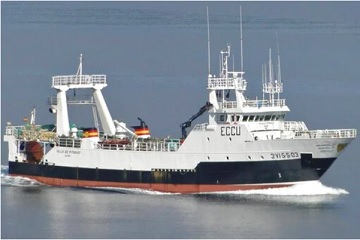
Shipwreck discovered off Newfoundland coast believed to be missing Galician vessel F/V Villa de Pitanxo
A shipwreck located off the coast of Newfoundland in Canada is believed to be that of the Galician vessel F/V Villa de Pitanxo. This news was relayed today by the underwater robot that had been submerged into the Atlantic Ocean yesterday, Saturday 4, from the ship ‘Ártabro’, which has been leading the search operation since departing Vigo last May 17. The Galician fishing boat sank on February 22, 2022, with the loss of 21 out of its 24-man crew. Only three of the crew members survived: the skipper, his nephew, and a sailor of Ghanaian origin. >click to read< 17:15

Supporting Innovation and Business Development in Ocean Technology
To enhance marketing and business development in the ocean technology industry, the Honourable Andrew Parsons, KC, Minister of Industry, Energy and Technology, today announced over $138,000 through the Business Development Support Program for two businesses operating in this sector. Notus Electronics Limited is a privately-owned, St. John’s-based manufacturer of hydro acoustic net monitoring solutions. SubC Imaging, founded by Chad Collett in 2010, designs and manufactures underwater cameras, systems, LED lighting, lasers, DVRs, and remote operations solutions. >click to read< 19:50

‘What we’re looking for is a fair shake’: Newfoundland inshore crab fishers resume pop-up protests around St. John’s
They didn’t get a clear answer from the Department of Fisheries and Oceans on Monday, so inshore crab harvesters are holding “pop-up” protests again today, March 28, in St. John’s. Jason Sullivan and the 3L protestors say the crab stocks in the zone should be assessed as one biomass rather than as separate inshore and offshore stocks. That way, the protestors say, the inshore would be treated the same as the offshore fleets, using the same exploitation rate formulas if the crab stocks are growing. >click to read< 14:52
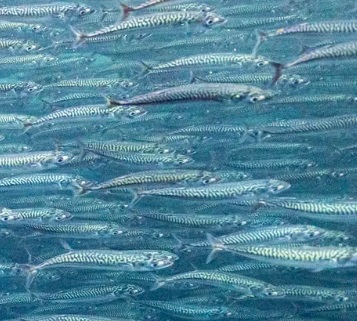
‘The people’s fish’: Atlantic mackerel stocks have collapsed – can a moratorium bring them back?
Canada’s Atlantic mackerel population is a shadow of what it once was, and its decline threatens the well-being of the people who depend on it. Mackerel supports one of Atlantic Canada’s top recreational fisheries, and one of its oldest commercial fisheries. The fish is also used for bait, and it has an important place in Indigenous cultures. The same migratory stock supports recreational and commercial fisheries in the U.S. Last March, the federal Department of Fisheries and Oceans closed Canada’s commercial and bait mackerel fisheries for one year and placed daily personal limits on the recreational fishery, to give the population time to rebound. But the U.S. fishery remains open, albeit with a reduced quota. Next week, federal Fisheries Minister Joyce Murray will decide whether to reopen the Canadian fishery. The DFO’s latest studies have found no sign of recovery in the mackerel stock. Photos, >click to read< 13:09

Persistence pays off for protesting fishermen – Hints of “flexibility”, and a meeting with DFO officials on Monday
Five days of persistence appears to be paying off for the 550 Newfoundland crab fishers from the 3L inshore fleet. The 3L fishing zone is off the island’s east coast. On Friday, March 24, the fishers received a letter from Fisheries and Oceans Minister Joyce Murray committing to review the possibility of amalgamation of the 3L inshore and offshore areas into one area of biomass. Murray also indicated in her letter, delivered to the Fish Food and Allied Workers’ (FFAW) union that “there is flexibility” in the precautionary approach framework,,, The protests this week, however, were not initiated by the FFAW. “I’ve gotta say thank you to Jason Sullivan. You sir deserve a medal for bringing this to light for 3L inshore fishing !! Without you I don’t think we’d be as far as we are,” wrote Jason Elliott. >click to read< 10:19
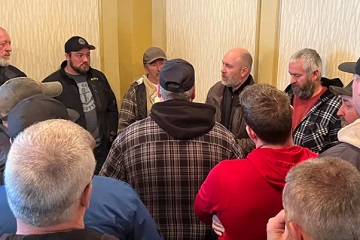
Angry inshore harvesters from fishing area 3L demand changes to allow for quota increases
A week of angry protests by inshore crab harvesters from eastern Newfoundland cooled slightly Friday following the promise by the federal fisheries minister of a review of their concerns, and a meeting on Monday between union and federal fisheries officials. Dozens of harvesters were summoned to a hotel in St. John’s on Friday morning by their union for an update on efforts to modify or rip up a management strategy that harvesters say is restricting their chances of higher quotas, and has the potential to drive many of them out of business as markets shrink following a banner year in 2022. There was talk of once again staging a protest, and at one point fisheries union president Greg Pretty donned his jacket and told protestors to follow him to DFO’s White Hills location. “Let’s go. Let’s get out,” Pretty said. >click to read< 13:51

Crab harvesters take protest inside St. John’s hotel as price-setting meetings continue
Newfoundland and Labrador’s crab fishermen resumed their protest Wednesday, calling for a quota increase and changes to the federal government’s fisheries management. Dozens of harvesters descended on a Fisheries and Oceans Canada office in the east end of St. John’s early Wednesday morning, with some using their vehicles to block traffic from coming in or out. Some used symbols of the fishery to protest, like a crab pot placed on the building’s flagpole. Fisherman Jason Sullivan said he and his colleagues are calling for changes to the precautionary approach framework that separates the inshore fishery of Zone 3L from the offshore fishery. >click to read< 16:44
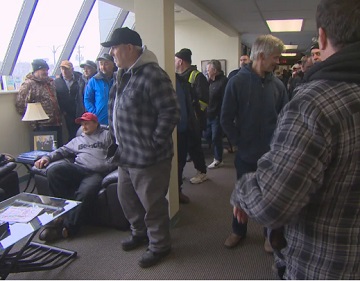
Snow crab fishermen protest quota allocations on first day of price-setting
About 100 snow crab fishermen descended Monday on a St. John’s hotel, where officials had begun setting crab prices for the season, to protest a management system and quotas they say need an overhaul. The protest, at the Sheraton in downtown St. John’s, centred on a new precautionary approach designed to protect stocks, implemented in December by the Department of Fisheries and Oceans, which manages inshore and offshore crab stocks differently. Bay Bulls fisherman Jason Sullivan says the change leaves them with less to catch. “These guys are at 30 per cent of their original quotas, and they need an increase,” Sullivan said Monday. “They’re catching their quotas in one single day.… . >click to read< 21:42

Protesting Fish Harvesters Interrupt Crab Price Setting Negotiations
The protesters fish in 3L, the area from Cape Freels to the southern Avalon. Instead of being one biomass, DFO has created two biomasses which protesters say leaves the inshore sector with less and the larger offshore boats with more. They accuse the union, the FFAW, of weak representation on the issue. Harvester Keith Boland says they’re upset about the way crab quotas are split. He says they have issued with the precautionary approach being taken and the way in which the department is dividing the biomass into inshore and offshore. “Years ago, there was no ‘inside 25 mile’….the crab moved in and the crab moved out,” He laments. “We’re not getting much science now.” >click to read< 13:22
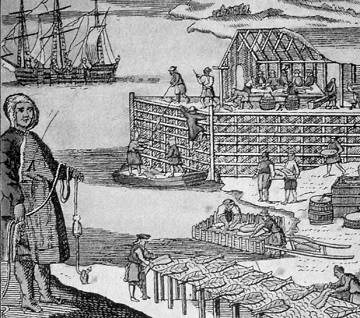
The Fishing Revolution and the Origins of Capitalism
Fishing is older than humanity. Fishing for sale rather than consumption developed along with the emergence of class-divided urban societies about five thousand years ago. Getting fish to towns and cities where people could not catch it themselves required organized systems for catching, cleaning, preserving, transporting, and marketing. This was particularly true in the Roman Empire, where serving fresh fish at meals was a status symbol for the rich, and fish preserved by salting was an essential source of protein for soldiers and the urban poor. In addition to boats, an extensive shore-based infrastructure was needed to provide fish for millions of citizens and enslaved people: “elaborate concrete vats and other remains of ancient fish-processing plants have been found all along the coasts of Sicily, North Africa, Spain, and even Brittany on the North Atlantic. The first surviving account of fish depletion caused by overfishing was written in Rome, about 100 CE. >click to read< 10:29

Jason Sullivan to run for FFAW Presidency
Bay Bulls fisherman and President of SEA-NL Jason Sullivan has announced plans to run for the top job at the FFAW-Unifor, despite long odds against a candidate unanimously endorsed by the union executive. “It’s easy to criticize, but you have to be willing to put your neck out there and offer the membership an alternative,” says Sullivan. “It’s time to change the course of the FFAW and regain the trust of the membership through communication and listening and acting on concerns.” >click to read< 10:05
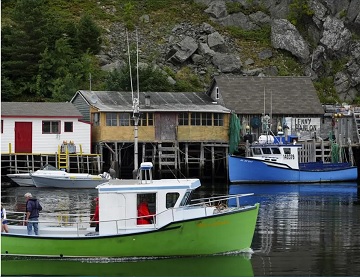
Newfoundland’s fishing towns were built to survive, but Fiona changed the game
For generations, Cory Munden’s family has been building and living on the same piece of oceanside land in the southwestern Newfoundland town of Port aux Basques. The town is a former fishing village, and like many of the houses destroyed by post-tropical storm Fiona on the morning of Sept. 24, the Munden family home was built by fishers. The land on which it stood was bought by Munden’s fisherman grandfather because it was close to where he worked, and it was protected by an offshore island. For 70 years, the houses on that land withstood the worst weather Newfoundland had to offer. Then Fiona hit. >click to read< 09:41
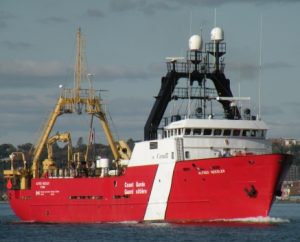
Repeated Failures: DFO ship woes hampering East Coast science surveys
DFO has missed multiple surveys as it struggles to bring new offshore fishery science vessels into service, and aging ships near retirement. Sailing restrictions imposed early in the COVID-19 pandemic contributed to the problem, but so too have breakdowns on older ships and part replacements needed on the two new ships stationed on the East Coast. The science surveys are used to assess the health of major fish stocks and are critical in determining quotas for commercial fisheries worth hundreds of millions of dollars in Atlantic Canada. “There’s huge consequences. We want to know what’s going on. We need the data,” said Carey Bonnell, vice-president of sustainability and engagement at St. John’s-based Ocean Choice International, which is a seafood company. >click to read< 08:13






